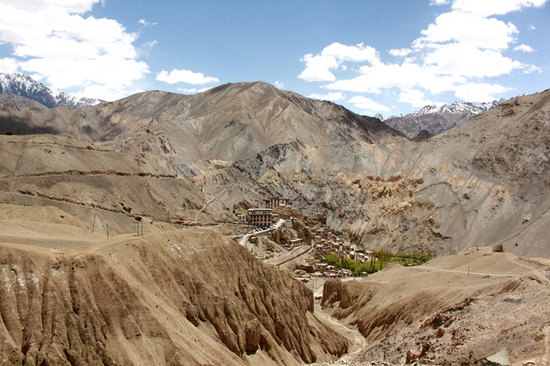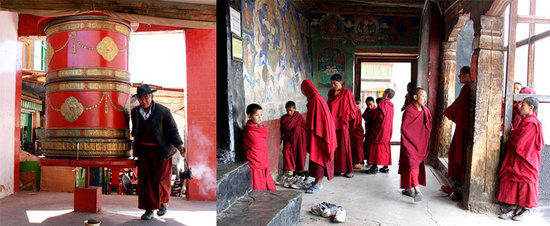28.07.2010

High in the north Indian state of Kashmir sits Ladakh, held by many as the last bastion of Himalayan Buddhism. Since Tibet is out of bounds for most tourists, Ladakh now attracts travelers and spiritual seekers who come for glimpses of a traditional Buddhist way of life; even seasoned travelers go so far as to describe it as the last Shangri La.
It is true that Kashmir is a war-torn region, however, the turmoil does not touch Ladakh, a good 280 miles from the capital city of Srinagar. Nor are there any foreign invaders intent upon destroying Buddhism to establish their own faith.
Today, the (perceived) threat to Ladakhi Buddhism is from a different kind of invasion – globalization – brought by travelers and their notions of modernity that invariably spread along with them. And with this comes concerns about the erosion of a faith and way of life that is centuries old.
Ladakh derives its meaning from La-Dags or “land of high passes”. As early as 1 A.D. Ladkah was an important trading post on the ancient silk route, hosting traders from both the West and East. Buddhism is said to have come into Western Ladakh via Kashmir in the 2nd century A.D. during the reign of the Kushan dynasty and spread later in the 8th century A.D. from Tibet. Soon, there was a well-established Buddhist kingdom in Leh, Ladakh, extending all the way to Lhasa, Tibet, some 850 miles away.
The first monastery in Ladakh was set up by Indian pilgrim Mahasiddha Naropa in the 10th century at Lamayuru, where it still sits unperturbed in the desolate moonscape scenery surrounding it.
Today, over 50% of Ladakh is Buddhist; only the small, self-contained Brokpa tribe in Ladakh practice Bonism (a faith pre-dating Buddhism in Ladakh) while Islam is followed by most in Western Ladakh.

Different sects flourished under the Buddhist kings until the Gelugkpa (Yellow Hat) order, introduced by the Tibetan philosopher Tsongkhapa in the 14th century, became the dominant path. Towards the 16th century, Ladakh fell to the Muslim invaders from the West but Buddhism nonetheless managed to survive and eventually thrive through these battles. It further flourished under the Namgyal dynasty established by Singge Namgyal in the late 16th century. And although the Drukpa (Red Hat) order gained prominence under the Namgyal kings, Ladhaki Buddhists still venerate the Dalai Lama of Tibet (of the Gelugkpa order) as their spiritual leader.
However, in my travels in Ladakh, I see no signs that validate concerns of a disappearing way of life; traditional Buddhist customs are very much an integral part of daily life. Though the trappings of modernity are visible everywhere, especially in Leh – mobile phones, internet cafes and young men in jeans – all across Ladakh, in the markets, villages and remote areas, people walk about in traditional costumes with prayer wheels in hand and smiles on their faces.
Up here, the high altitude lakes blow biting cold winds throughout the year. Monasteries and stupas serve as living museums of the faith, with their rich collection of frescoes and murals, prayer artifacts, texts and idols.
Up here, Ladkahi Buddhism is alive and thriving.
Author: Charukesi Ramadurai
Source: thewip.net




